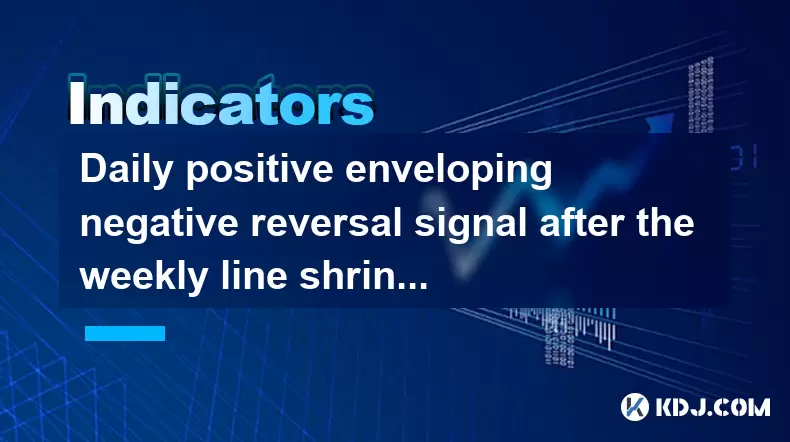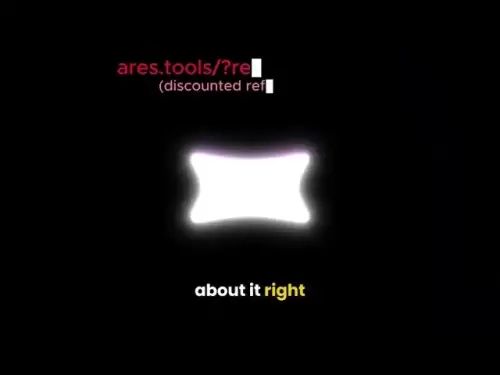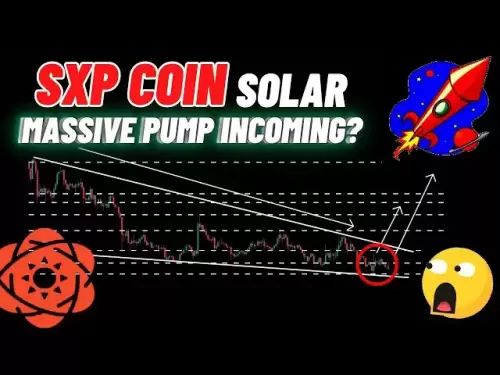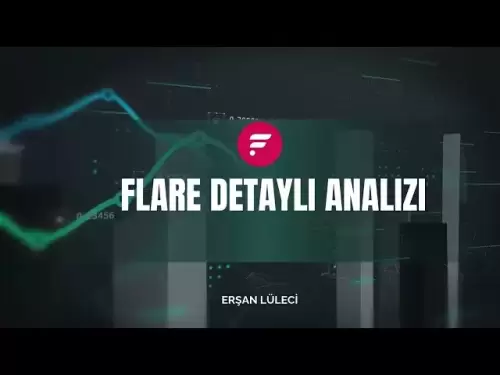-
 Bitcoin
Bitcoin $117500
2.04% -
 Ethereum
Ethereum $3759
3.02% -
 XRP
XRP $3.171
3.30% -
 Tether USDt
Tether USDt $1.000
0.03% -
 BNB
BNB $782.4
2.52% -
 Solana
Solana $187.2
5.62% -
 USDC
USDC $0.0000
0.02% -
 Dogecoin
Dogecoin $0.2380
5.26% -
 TRON
TRON $0.3175
1.07% -
 Cardano
Cardano $0.8227
4.03% -
 Hyperliquid
Hyperliquid $44.50
5.44% -
 Sui
Sui $4.020
10.07% -
 Stellar
Stellar $0.4396
6.28% -
 Chainlink
Chainlink $18.32
4.55% -
 Hedera
Hedera $0.2628
10.71% -
 Bitcoin Cash
Bitcoin Cash $554.8
4.90% -
 Avalanche
Avalanche $24.20
4.60% -
 Litecoin
Litecoin $113.7
2.31% -
 Shiba Inu
Shiba Inu $0.00001413
5.99% -
 UNUS SED LEO
UNUS SED LEO $8.984
0.11% -
 Toncoin
Toncoin $3.326
7.22% -
 Ethena USDe
Ethena USDe $1.001
0.00% -
 Uniswap
Uniswap $10.49
4.56% -
 Polkadot
Polkadot $4.092
4.02% -
 Monero
Monero $326.6
1.30% -
 Dai
Dai $1.000
-0.01% -
 Bitget Token
Bitget Token $4.570
2.49% -
 Pepe
Pepe $0.00001267
5.10% -
 Aave
Aave $297.3
3.10% -
 Cronos
Cronos $0.1344
4.10%
Daily positive enveloping negative reversal signal after the weekly line shrinks to the ground volume
A daily bullish engulfing candle after weekly volume shrinks to extreme lows signals potential trend reversal, indicating exhausted sellers and emerging buyer strength in crypto markets.
Jul 25, 2025 at 06:07 am

Understanding the Daily Positive Enveloping Candle After a Weekly Volume Contraction
When analyzing cryptocurrency price charts, technical traders often rely on candlestick patterns and volume behavior to anticipate potential reversals. A daily positive enveloping candle following a weekly volume contraction to extremely low levels—commonly referred to as "shrinking to the ground volume"—can signal a significant shift in market sentiment. This pattern typically emerges after a prolonged downtrend where selling pressure diminishes, and volume dries up, indicating exhaustion among bears.
The term "positive enveloping" refers to a bullish candlestick pattern where the body of the current day's candle completely engulfs the body of the previous day’s candle. This means today’s open is lower than yesterday’s close, and today’s close is higher than yesterday’s open, forming a strong reversal signal. When this occurs after a period of extremely low weekly trading volume, it suggests that the market has reached a point of indecision or consolidation, often preceding a strong directional move.
What Does "Weekly Volume Shrinks to the Ground" Mean?
In cryptocurrency trading, volume is a critical indicator of market participation and conviction. When weekly trading volume shrinks to the ground, it reflects a notable decline in trading activity, often seen during sideways or downtrending phases. This phenomenon indicates that most active traders have exited positions, and few new participants are entering.
This contraction in volume is significant because it often precedes a breakout or reversal. Markets cannot remain in a state of extremely low activity indefinitely. When volume reaches such minimal levels, it sets the stage for a surge in participation once new information or sentiment shifts occur. In technical analysis, this is interpreted as a compression phase, where volatility is suppressed before a potential explosive move.
The combination of low volume and a tight price range on the weekly chart suggests that supply has been largely absorbed. Once a bullish engulfing candle appears on the daily chart under these conditions, it may indicate that buyers are stepping in with renewed interest, overpowering the previous selling pressure.
How to Identify the Daily Positive Enveloping Pattern
To correctly identify a daily positive enveloping candle, traders must examine two consecutive daily candles:
- The first candle is typically bearish (red), showing continued selling pressure.
- The second candle opens lower than the previous close but closes above the previous open, fully encompassing the prior candle’s body.
This pattern must be analyzed in the context of the broader trend and volume behavior. For the signal to carry weight, the engulfing candle should appear after a clear downtrend and during or immediately after a period of minimal weekly volume.
When applying this to cryptocurrency charts such as Bitcoin or Ethereum on platforms like TradingView or Binance:
- Navigate to the weekly chart and observe the volume bars at the bottom.
- Look for a sequence of shrinking volume bars, ideally reaching a multi-week or multi-month low.
- Switch to the daily chart and locate the most recent candle that completely engulfs the prior day’s body in a bullish direction.
The engulfing candle’s volume should ideally be significantly higher than the preceding days, confirming strong buyer participation. A high-volume engulfing candle after low-volume consolidation increases the reliability of the reversal signal.
Practical Steps to Trade This Signal
Executing a trade based on this technical setup requires a structured approach. Here is a step-by-step guide:
Confirm the weekly volume contraction: Use the volume indicator on the weekly timeframe. Identify at least three consecutive weeks of declining volume, with the latest week showing the lowest volume in recent history.
Wait for the daily engulfing candle to close: Do not act on an incomplete candle. Allow the daily candle to fully close to avoid false signals from intra-day volatility.
Verify the engulfing structure: Ensure the current day’s candle completely covers the body of the previous day. The wicks may extend beyond, but the body engulfment is essential.
Check for volume confirmation on the daily chart: The engulfing candle should exhibit a noticeable increase in volume, ideally 1.5 to 2 times the average daily volume over the past 10 days.
Set entry and exit points: Consider entering a long position at the open of the next day. Place a stop-loss just below the low of the engulfing candle to manage risk.
Use additional confirmation tools: Overlay indicators such as the Relative Strength Index (RSI) or Moving Averages. An RSI below 30 on the daily chart prior to the engulfing candle adds confluence, indicating the asset was oversold.
Monitor higher timeframes: Ensure that the daily signal aligns with support levels on the weekly chart, such as key moving averages or historical demand zones.
Why This Signal Matters in Cryptocurrency Markets
Cryptocurrency markets are highly sensitive to shifts in sentiment and liquidity. Due to their 24/7 nature and decentralized structure, volume patterns can provide early clues about institutional or whale activity. A volume contraction to the ground often indicates that large players have finished accumulating or distributing, and the market is ready for the next phase.
The appearance of a daily positive engulfing candle under these conditions suggests that aggressive buying has entered the market. In volatile assets like crypto, such reversals can lead to rapid price increases, especially if they coincide with positive news, halving events, or macroeconomic shifts.
Moreover, because many retail traders focus on short-term price action, they may overlook the significance of volume-based signals. Recognizing this pattern allows traders to position early in a potential uptrend before broader market awareness triggers a FOMO (fear of missing out) rally.
Common Misinterpretations and How to Avoid Them
Not every engulfing candle after low volume leads to a sustained reversal. Traders must avoid misreading noise as signal. Key pitfalls include:
Ignoring the broader trend: An engulfing candle in a strong downtrend may simply be a bear trap. Ensure the asset is not still in a dominant downtrend on higher timeframes.
Overlooking volume on the engulfing candle: If the engulfing candle has low volume, it lacks confirmation. The surge in volume is critical to validate buyer conviction.
Trading against resistance: Even with a strong signal, entering near a major resistance level (such as a previous high or Fibonacci level) increases risk. Always assess the price context.
Failing to use stop-loss orders: Cryptocurrency volatility can trigger sharp reversals. Without proper risk management, a seemingly strong signal can result in significant losses.
Frequently Asked Questions
What timeframes should I use to confirm the weekly volume contraction?
Focus on the weekly chart for volume analysis. Compare the current week’s volume to the prior 4–8 weeks. A consistent decline culminating in the lowest volume bar in that period confirms the contraction.
Can this signal appear in altcoins as well as Bitcoin?
Yes, this pattern is applicable across all cryptocurrencies. However, higher market cap coins like Bitcoin and Ethereum tend to produce more reliable signals due to deeper liquidity and less manipulation.
Does the engulfing candle need to break a moving average to be valid?
Not necessarily. While a break above the 50-day or 200-day moving average adds strength, the core signal relies on volume and candle structure. Contextual confirmation improves reliability but isn’t mandatory.
How long should I hold a position after this signal appears?
Holding duration depends on your strategy. Some traders take partial profits at 2x or 3x the risk (measured from stop-loss). Others hold until volume begins to decline again or a bearish reversal pattern forms. Always follow your predefined exit rules.
Disclaimer:info@kdj.com
The information provided is not trading advice. kdj.com does not assume any responsibility for any investments made based on the information provided in this article. Cryptocurrencies are highly volatile and it is highly recommended that you invest with caution after thorough research!
If you believe that the content used on this website infringes your copyright, please contact us immediately (info@kdj.com) and we will delete it promptly.
- Pi Coin, Wallet Features, and Coinbase: What's the Buzz?
- 2025-07-26 18:30:12
- Worldcoin, Punisher Coin, and the Meme Coin Mania: What's the Haps?
- 2025-07-26 18:30:12
- Conviction, Justice System, and Murders: A Look at Recent Cases and Shifting Perspectives
- 2025-07-26 18:50:11
- Shiba Inu, Remittix, and the Market Surge: What's the Hype?
- 2025-07-26 19:10:12
- Cardano Price, ADA Holders, and Leadership Criticism: What's the Real Deal?
- 2025-07-26 19:30:12
- MicroStrategy, Bitcoin, and XRP Whale Dumps: What's the Deal?
- 2025-07-26 19:30:12
Related knowledge

What does it mean that the rebound is blocked after the moving average is arranged in a short position for the first time?
Jul 26,2025 at 10:51am
Understanding the Short-Term Moving Average ConfigurationWhen traders refer to a 'short position arrangement' in moving averages, they are describing ...

What does it mean that the parabolic indicator and the price break through the previous high at the same time?
Jul 26,2025 at 07:22pm
Understanding the Parabolic Indicator (SAR)The Parabolic SAR (Stop and Reverse) is a technical analysis tool developed by J. Welles Wilder to identify...

What does it mean when the price rises along the 5-day moving average for five consecutive days?
Jul 26,2025 at 08:07am
Understanding the 5-Day Moving Average in Cryptocurrency TradingThe 5-day moving average (5DMA) is a widely used technical indicator in cryptocurrency...

What does it mean when ADX breaks through 25 and +DI continues to rise?
Jul 26,2025 at 07:00pm
Understanding the ADX Indicator and Its ThresholdsThe Average Directional Index (ADX) is a technical analysis tool used to measure the strength of a t...

What does it mean when the price breaks through the 60-day moving average with a large volume but shrinks the next day?
Jul 26,2025 at 06:01am
Understanding the 60-Day Moving Average in Cryptocurrency TradingThe 60-day moving average (60DMA) is a widely used technical indicator in the cryptoc...

What does the sudden rise of ADX in DMI accompanied by +DI crossing -DI indicate?
Jul 26,2025 at 01:21pm
Understanding the DMI and Its Core ComponentsThe Directional Movement Index (DMI) is a technical analysis tool used to determine the presence and stre...

What does it mean that the rebound is blocked after the moving average is arranged in a short position for the first time?
Jul 26,2025 at 10:51am
Understanding the Short-Term Moving Average ConfigurationWhen traders refer to a 'short position arrangement' in moving averages, they are describing ...

What does it mean that the parabolic indicator and the price break through the previous high at the same time?
Jul 26,2025 at 07:22pm
Understanding the Parabolic Indicator (SAR)The Parabolic SAR (Stop and Reverse) is a technical analysis tool developed by J. Welles Wilder to identify...

What does it mean when the price rises along the 5-day moving average for five consecutive days?
Jul 26,2025 at 08:07am
Understanding the 5-Day Moving Average in Cryptocurrency TradingThe 5-day moving average (5DMA) is a widely used technical indicator in cryptocurrency...

What does it mean when ADX breaks through 25 and +DI continues to rise?
Jul 26,2025 at 07:00pm
Understanding the ADX Indicator and Its ThresholdsThe Average Directional Index (ADX) is a technical analysis tool used to measure the strength of a t...

What does it mean when the price breaks through the 60-day moving average with a large volume but shrinks the next day?
Jul 26,2025 at 06:01am
Understanding the 60-Day Moving Average in Cryptocurrency TradingThe 60-day moving average (60DMA) is a widely used technical indicator in the cryptoc...

What does the sudden rise of ADX in DMI accompanied by +DI crossing -DI indicate?
Jul 26,2025 at 01:21pm
Understanding the DMI and Its Core ComponentsThe Directional Movement Index (DMI) is a technical analysis tool used to determine the presence and stre...
See all articles

























































































